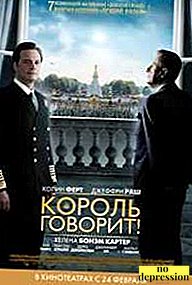Good day to all! I propose to devote this publication to brainstorming. This technique allows not only to generate original ideas, but also to improve the creative level of the team. There are many types of brainstorming. Some of them have even more potential than the standard approach. Since far from everyone knows about these methods, this article will reveal the most promising types of brainstorming.
What is brainstorming?
Brainstorming is a way to solve tasks by collectively discussing them and voicing the largest number of possible solutions. Unlike regular conversation or discussion, it is forbidden to criticize any ideas during a brainstorming session. The main task is to generate as much as possible.
After the assumptions end, the stage of their analysis and evaluation begins. At this stage, criticism is already permissible, thanks to which the most absurd variants are swept aside. Thus, by the end of the meeting, only the most successful ideas remain, which later go to work.
What do brainstorming and kairos management have in common?
Kairos management, like brainstorming, also proposes to use all the reserves of a person. In this case, it is about creativity and creativity. Moreover, the basic concept of Kairos management is based on the versatility of the team. The more "mixed" the audience, the more unexpected and original the ideas it can produce.
The use of non-standard variations of brainstorming allows you to even better unleash the creative potential of their employees, thereby turning the meeting into a truly exciting game.
Original brainstorming
Years of experience in providing training and consulting services, allows us to identify three of the most promising brainstorming variations, from those that have been tested:
- Reverse brainstorming;
- Shadow Brainstorming;
- Role brainstorming.
If you have not even heard of them, then I advise you to familiarize yourself with these methods, if you have encountered them, then I suggest considering my interpretation.
Reverse Brainstorming
In a few words - this is a “giveaway game,” that is, a cardinal change in the vector of communication. If the task is to improve something, then according to this approach, you should come up with the worst option.
According to the standard method of reverse brainstorming, it is recommended to come up with anti-tips, which then should simply be turned inside out. From experience, I would say that this approach is not very effective, since by “turning over” bad ideas, we end up with the same thing that would have been the case in the usual brainstorming.
The value of a brainstorming session is precisely the generation of the “bad” solutions. I'll explain now. Firstly, in the process of such a “game of giveaway,” the human brain is pre-configured for originality. Indeed, it is one thing to conscientiously follow the orders of the authorities in a given range of decisions, and it is quite another to go beyond all the rules and limits.
Secondly, a search in the opposite direction can sometimes give us even more “bonuses” than the standard route. A striking example is Christopher Columbus, who sailed in the opposite direction and made a discovery, far more significant than the alternative route to India.
Once, at one of my trainings, the audience was asked to come up with a new bottle concept. As we worked in the spirit of reverse brainstorming, participants began to generate overtly unsuccessful solutions. For example, a bottle with two or fewer necks, with an unpleasant smell, weighing under 20 kilograms, etc. Further, we began to "turn over" absurd sentences, in the end getting what they would have thought of. Everything, except for weight in 20 kg. We decided to leave it, and even came up with a kind of commercial. An impressive size of the jock takes in one muscular arm a “bottle” in the shape of a dumbbell, with obvious effort of the muscles brings it to his lips and says: “I swing, even when I drink”. Brad - many will say. Maybe. But the original product and its customers will find it, even as a souvenir. If the discussion was going on in the usual brainstorming format, such an idea would hardly have arisen.
Shadow Brainstorming
Another indispensable tool for the development of the capabilities of the team, in which you will definitely find your own "gray mice". So, shadow brainstorming is invented specifically for them. Its essence is as follows. While the most active members of the team are directly involved in the discussion of the issue, leaflets on which they begin to write down their ideas are given less initiative. Then, at the end of communication, the ideas obtained in the usual way are compared with those that were written down on paper. Who knows, maybe some quiet person will issue a proposal, many times larger than all the others combined. In a familiar way, he will not do this, and continuing to doubt his abilities. And then, as they say, "paper endures everything." In this way, the company can stir up its "outsiders", perhaps even inspiring one of them to take their place in the usual discussion.
Role brainstorming
The “Six Hats” method can be considered a prominent representative of this trend, which helps strengthen one of the qualities of each employee, according to the color of the hat:
- Yellow - optimism;
- Black - criticism;
- Green - creativity;
- White - logic;
- Red - intuition and emotions;
- Blue - a philosophical view of the world.
On the one hand, role-playing brainstorming narrows the field of activity somewhat, but on the other, it expands the chosen direction. Sometimes people "wear" hats that match their color. But it is better to "hand" the opposite role to each. Give optimism to criticism, logic to the creative, emotions to the intellectual, etc. This will help them get out of the comfort zone, thereby activating the previously untapped potential.
When all the roles are distributed, the discussion begins, where everyone expresses thoughts, based on the color of his hat. Optimist - trying to see everything positive. Critic - makes comments and points to flaws. Logic - operates only with facts. Creative artist - uses his imagination. Emotional - overwhelmed with feelings. Philosopher - systematizes and summarizes their ideas.
All the brainstorming approaches described are equally important for improving the competitiveness of the team. Especially in the case of multitasking, in the fight against which effective multifunctionality will help - another component of Kairos management, which we will discuss in the next article.




